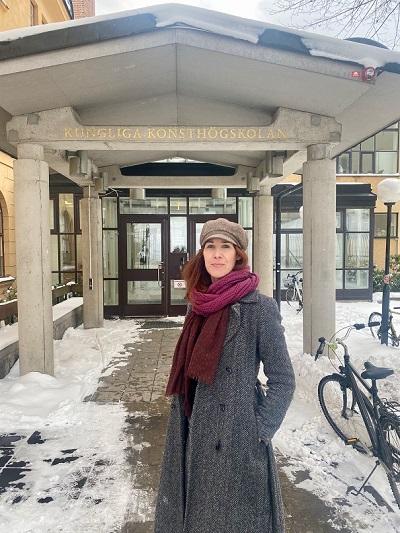Artistic research and artistic research data have recently been brought to the forefront of the agenda. But artistic research and research data from research in the creative and performing arts have already been discussed for several years by the Swedish Research Council, the Association of Swedish Higher Education Institutions (SUHF), and especially in Konstex, a national network for higher education institutions with the authority to award degrees based on artistic merit.

For the past couple of months, SND has been working on an initiative on research data from research in the creative and performing arts. Karin Westin Tikkanen, training coordinator at SND, heads the work.
“We’ve had a period of open-ended discussions with representatives from various levels of artistic research, including from institutions in Konstex, to gain a better understanding of their views on research data and the problems they see regarding storing and sharing research data from the artistic field. Now it's time to take the discussions further and see how SND can turn them into something concrete.
When we talk about artistic research, we need to distinguish between the research and the artwork: artistic research is about analyzing the process that leads to a work of art. The work as such isn’t the subject of the research but a part of the scientific outcome.”
“We haven’t got any research data”
The views on artistic research data vary among the representatives of the field who Karin Westin Tikkanen has spoken to. While representatives from one HEI claim to have no research data at all, another HEI matter-of-factly refers to research data. The question is what artistic research data really is and what determines that.
“Artistic research in, for example, textile design spans the entire spectrum from measurements and interviews that provide traditional research data, to studies of the artistic process. It’s more appropriate to speak of research data from artistic research. The artistic aspect isn’t in the data.”
The questions regarding research data have to be approached in a different way in artistic research, where you need to weigh in aspects of what it is relevant and possible to preserve and reuse. In conversations at SKH (Stockholm University of the Arts), pro-vice-chancellor Ellen Røed raised the perspective of ethical and aesthetic considerations. How do you discuss questions of originality and copyright when it comes to sketches for an artwork, or reason about the General Data Protection Regulation and ethical dilemmas when an artist is part of the work?
Gain an understanding of what researchers need
Karin Westin Tikkanen emphasizes the value of open conversations with researchers to gain an understanding of their reality as scholars in order to assist them with what they need from an organization like SND.
“Among the things they have requested are guidelines that not only provide information on how things should be, but that also provide guidance through the research process. For example, how to select which research data that shall and can be preserved, how to reason about copyright in a collaborative project between multiple artists, and how to use data management plans in a more adaptive and dynamic manner throughout the process.”
This is just the beginning
Karin Westin Tikkanen concludes by stating how positive researchers are to talking about these questions and how important it is to continue the conversation around artistic research.
“We’ve come some way in understanding the questions raised in artistic research, but there is still much to answer, and some aspects are beyond the scope of this work at SND. Nevertheless, it is a good start.”
Read more about artistic research in the Swedish Research Council’s research review on artistic research, published at the end of January this year.
